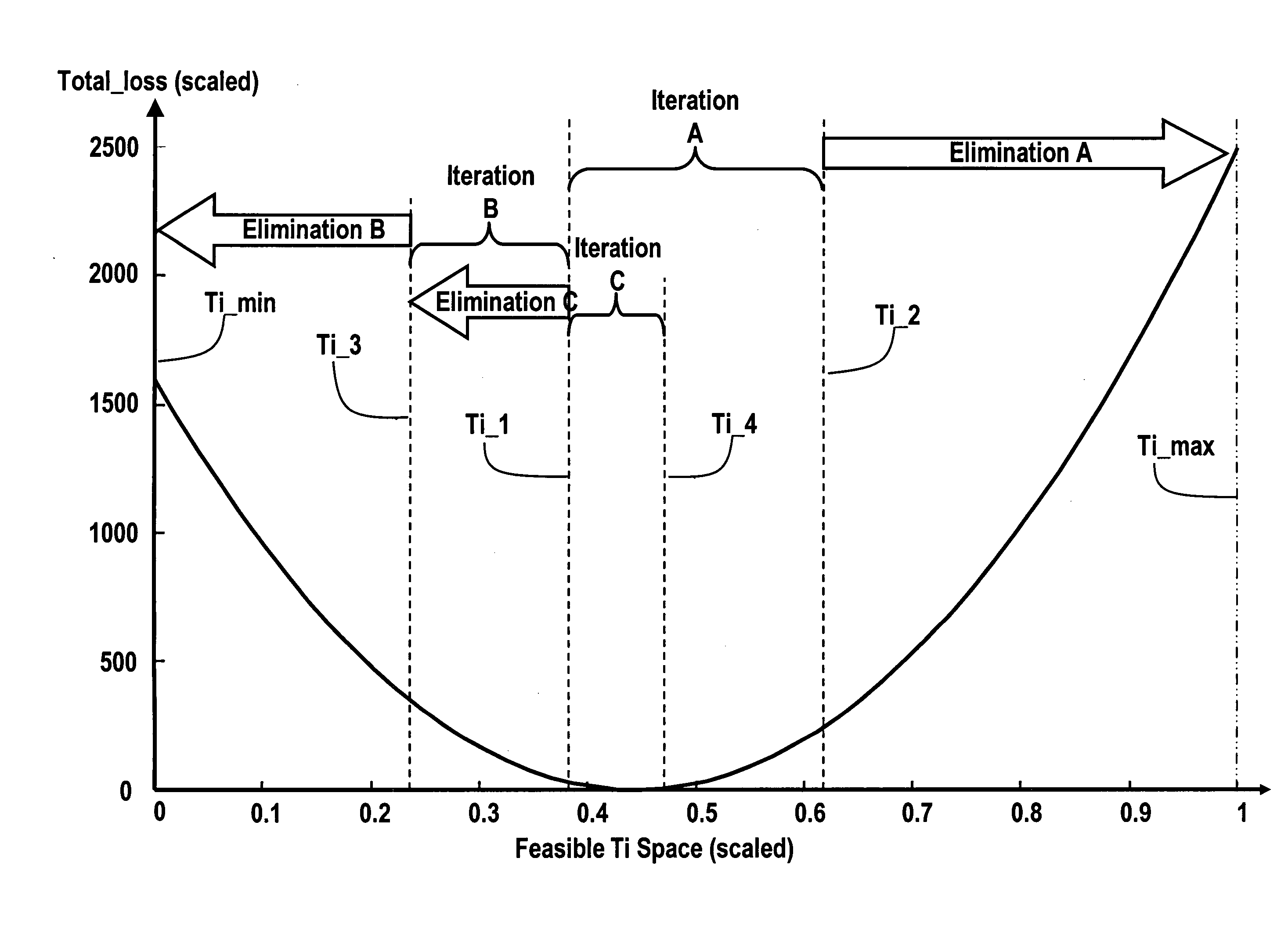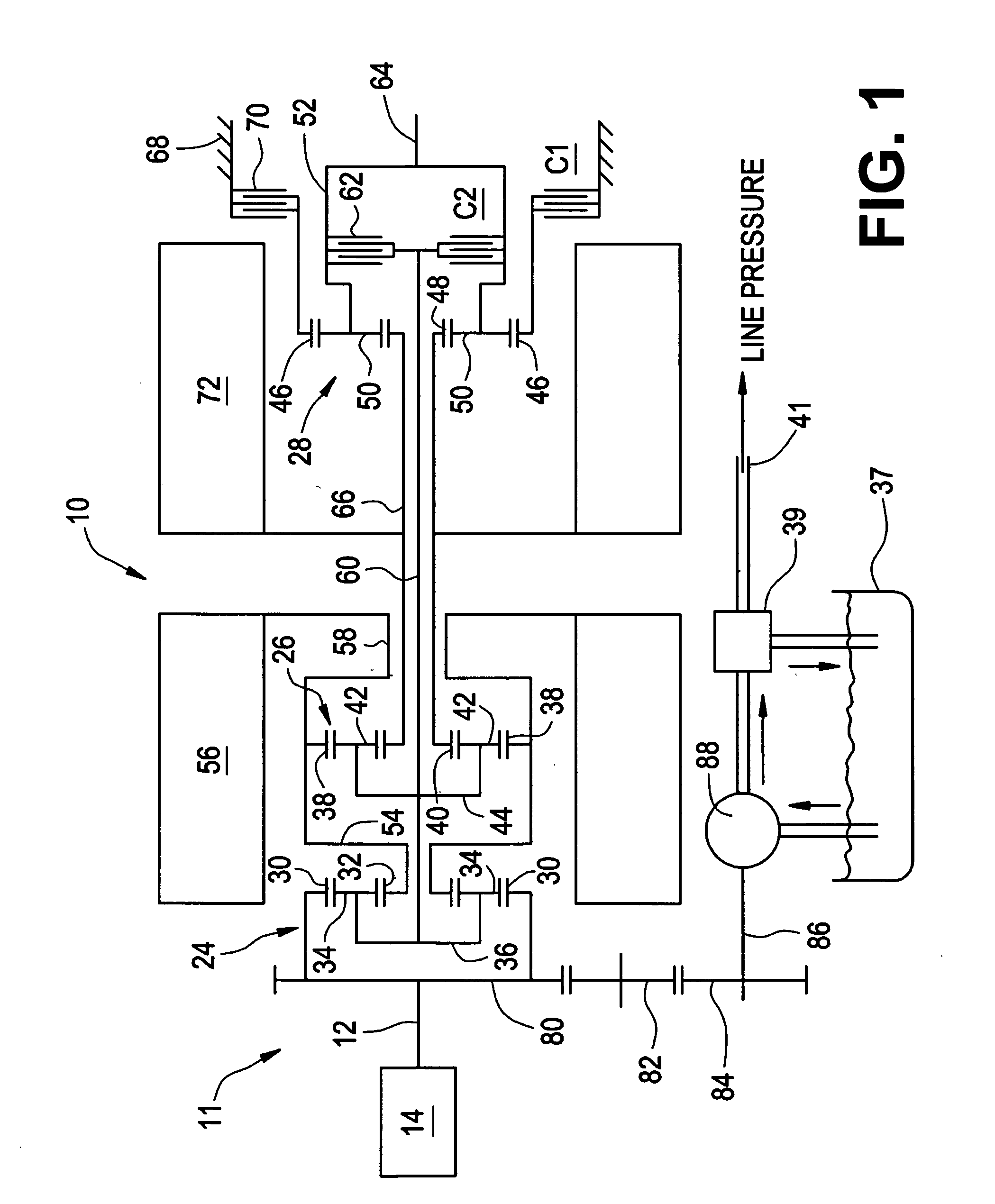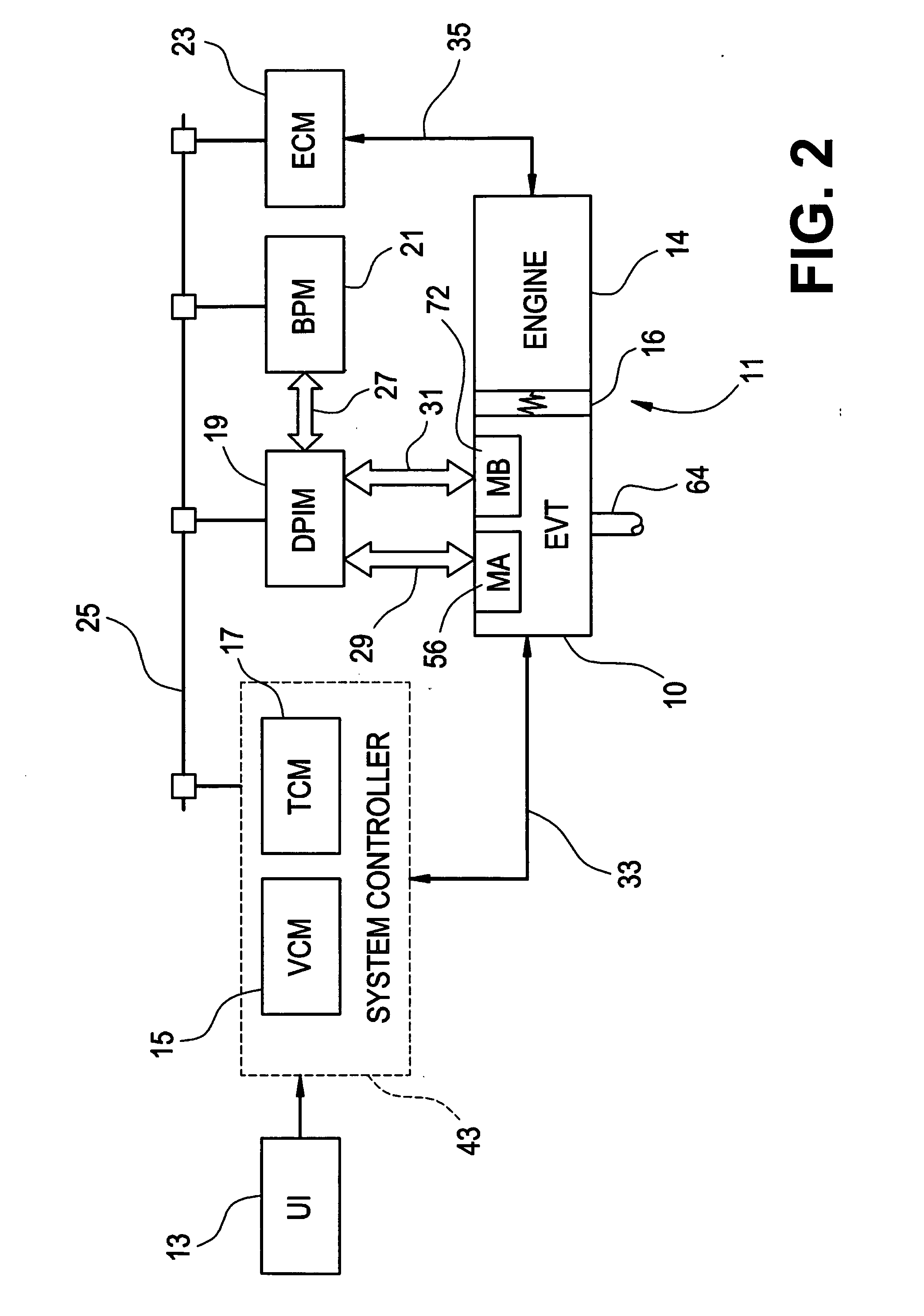Optimal selection of input torque considering battery utilization for a hybrid electric vehicle
- Summary
- Abstract
- Description
- Claims
- Application Information
AI Technical Summary
Benefits of technology
Problems solved by technology
Method used
Image
Examples
first embodiment
As illustrated in FIG. 10, in a first embodiment, a first battery cost factor term, SOC_Cost_Factor, penalizes charging at high states of charge (solid line 123 in FIG. 10) and penalizes discharging at low states of charge (broken line 121 in FIG. 10). A second battery cost factor term, Throughput Cost_Factor, captures the effect of battery usage and assigns appropriate penalties thereto (line 125 in FIG. 10). Battery usage is preferably measured in terms of average battery current (Amp-hr / hr), and a penalty placed on average battery current operating points that increases with higher battery current. Such cost factors are preferably obtained from data sets stored in table form within data structures in system controller 43. Such data sets are provided for reference by the routine in pre-stored table format. The product of the respective cost factors and battery power yields the cost function terms, Pcost_SOC and Pcost_throughput.
In this embodiment, the total subjective cost is det...
second embodiment
Referring to FIG. 12, in a second embodiment, the total subjective cost is determined as shown in block 200 as a function of battery power also using battery parameters which include the SOC and amp-hour per hour throughput to determine the battery costs or penalties. First, battery cost factors are determined using lookup tables based on the state of charge (SOC) of the batteries and the amp-hour per hour throughput of the batteries. Similar to the example above, SOC costs are determined with separate lookup tables as different values of SOC have different costs associated with charging or discharging. Since the sign convention is that positive battery power is discharging, when state of charge SOC is low, additional costs are applied to discharging situations by increasing the SOC positive cost factor as SOC decreases, as illustrated in block 202. When SOC is in the normal range or is high, there is no need to apply additional costs to discharging situations. Similarly, when the S...
PUM
 Login to View More
Login to View More Abstract
Description
Claims
Application Information
 Login to View More
Login to View More - R&D
- Intellectual Property
- Life Sciences
- Materials
- Tech Scout
- Unparalleled Data Quality
- Higher Quality Content
- 60% Fewer Hallucinations
Browse by: Latest US Patents, China's latest patents, Technical Efficacy Thesaurus, Application Domain, Technology Topic, Popular Technical Reports.
© 2025 PatSnap. All rights reserved.Legal|Privacy policy|Modern Slavery Act Transparency Statement|Sitemap|About US| Contact US: help@patsnap.com



